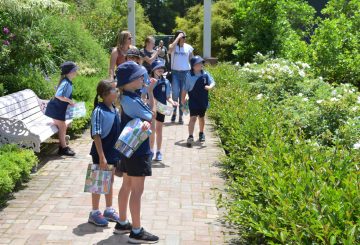전국 각지의 학교 학생들이 모의 선거에 참여함으로써 성인들보다 앞서 나섰습니다.775개 학교의 약 115,000명의 학생이 실제 총선을 반영하여 정당과 지역 유권자 후보에게 투표했습니다.선거관리위원회는 학교에 투표 장비를 제공하여 이 이니셔티브를 촉진했습니다.
레무에라 중급학교 (Remuera Intermediate School) 의 모의 선거에서 Sameer는 투표하는 학생들의 대기열을 관리하면서 그 과정이 간단하다고 설명했습니다.학교 홍보팀의 일원인 노라는 10대 청소년의 투표 허용 여부에 대해 의견이 엇갈렸다고 밝혔습니다.일부 사람들은 십대들이 선거 과정을 완전히 이해하지 못한다고 생각하지만, 다른 이들은 투표권을 가져야 한다고 생각합니다.또 다른 학생인 말리는 18세가 되면 투표에 대한 열정을 표현하며 특히 마오리 및 파시피카 청소년의 투표 참여 증대의 중요성을 강조했습니다.
이 학교의 교사인 줄리 밀러는 조기 선거 교육의 중요성을 강조했습니다.그녀는 이렇게 말했습니다. “이렇게 운영한다는 것은 학생들이 미래에 훨씬 더 잘 대비하고 참여할 수 있다는 뜻입니다.”선거관리위원회의 아누샤 굴러 (Anusha Guler) 는 전통적으로 청소년의 선거 참여도가 낮다는 점을 지적하면서 일찍 인지하면 참여도를 높일 수 있다고 말했습니다.
학생들은 어린이 투표 프로그램에 감사를 표했고, 이 프로그램이 선거에 대한 관심을 높이는 데 크게 기여했다고 느꼈습니다.이 프로그램을 통해 학생들은 의회의 기능, 정부 선거, 투표 선택의 자유에 대해 배웠습니다.학생 중 한 명인 루카는 국가 지도자 선출의 중요성을 강조하고 더 많은 사람들이 투표하도록 독려했습니다.
하지만 사미어와 윌리엄은 모의 선거 선택에 대해 질문을 받았을 때 여전히 입을 다물고 있었습니다.학생 투표 결과는 공식 선거 결과가 발표된 후에 공개됩니다.

















































-helped-regain-her-strength-and-balance-using-Nymbl-after-a-fall.-360x245.jpg)











